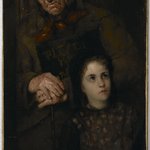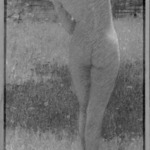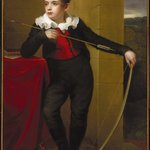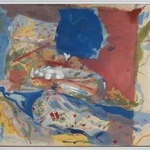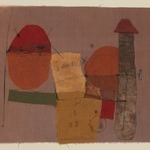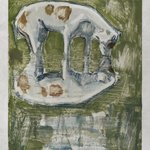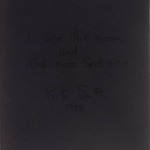
Fire Weed
Emmi Whitehorse
Contemporary Art
Emmi Whitehorse’s paintings combine formal depth and environmental interconnectivity through layered shades of red and curvilinear forms. Born and raised on a Navajo reservation, Whitehorse’s abstract forms are inspired by the Southwestern landscape and traditional wool-dying and weaving techniques. Alongside her grandmother, she learned to color wool with natural dye, the fibers left to dry under the sun. The dye would seep into the earth, leaving temporary stains of color. Whitehorse translated the sense of chaos and variation found in those colorful splotches into her artworks.
Working in the round, the artist positions paper on a flat surface so that orientation is determined through the process of making. Whitehorse attributes this approach to Navajo cultural and community traditions. As the artist described in 1997, “That sense of roundness is ingrained in you. Your house is built in the round. There is no square. Square seems to deprive the life force.”
Working in the round, the artist positions paper on a flat surface so that orientation is determined through the process of making. Whitehorse attributes this approach to Navajo cultural and community traditions. As the artist described in 1997, “That sense of roundness is ingrained in you. Your house is built in the round. There is no square. Square seems to deprive the life force.”
MEDIUM
Chalk, graphite, pastel and oil on paper mounted on canvas
DATES
1998
DIMENSIONS
Sheet: 38 1/2 × 50 in. (97.8 × 127 cm)
mount: 39 9/16 × 51 1/16 × 2 1/4 in. (100.5 × 129.7 × 5.7 cm) (show scale)
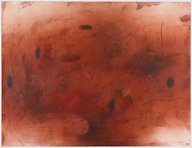


SIGNATURE
Signed LL verso: "#1179 'FIRE WEED'/7/1998/monogram.../_.horse"
Signed LR: "///"
COLLECTIONS
Contemporary Art
ACCESSION NUMBER
2006.49
CREDIT LINE
Gift of Hinrich Peiper and Dorothee Peiper-Riegraf in honor of Emmi Whitehorse
EXHIBITIONS
MUSEUM LOCATION
This item is not on view
CAPTION
Emmi Whitehorse (Navajo, born 1957). Fire Weed, 1998. Chalk, graphite, pastel and oil on paper mounted on canvas, Sheet: 38 1/2 × 50 in. (97.8 × 127 cm). Brooklyn Museum, Gift of Hinrich Peiper and Dorothee Peiper-Riegraf in honor of Emmi Whitehorse, 2006.49. © artist or artist's estate (Photo: Brooklyn Museum, 2006.49_PS1.jpg)
IMAGE
overall, 2006.49_PS1.jpg. Brooklyn Museum photograph, 2006
"CUR" at the beginning of an image file name means that the image was created by a curatorial staff member. These study images may be digital point-and-shoot photographs, when we don\'t yet have high-quality studio photography, or they may be scans of older negatives, slides, or photographic prints, providing historical documentation of the object.
RIGHTS STATEMENT
© Emmi Whitehorse
The Brooklyn Museum holds a non-exclusive license to reproduce images of this work of art from the rights holder named here.
The Museum does not warrant that the use of this work will not infringe on the rights of third parties. It is your responsibility to determine and satisfy copyright or other use restrictions before copying, transmitting, or making other use of protected items beyond that allowed by "fair use," as such term is understood under the United States Copyright Act.
For further information about copyright, we recommend resources at the United States Library of Congress, Cornell University, Copyright and Cultural Institutions: Guidelines for U.S. Libraries, Archives, and Museums, and Copyright Watch.
For more information about the Museum's rights project, including how rights types are assigned, please see our blog posts on copyright.
If you have any information regarding this work and rights to it, please contact copyright@brooklynmuseum.org.
If you wish to contact the rights holder for this work, please email copyright@brooklynmuseum.org and we will assist if we can.
RECORD COMPLETENESS
Not every record you will find here is complete. More information is available for some works than for others, and some entries have been updated more recently. Records are frequently reviewed and revised, and we welcome any additional information you might have.



